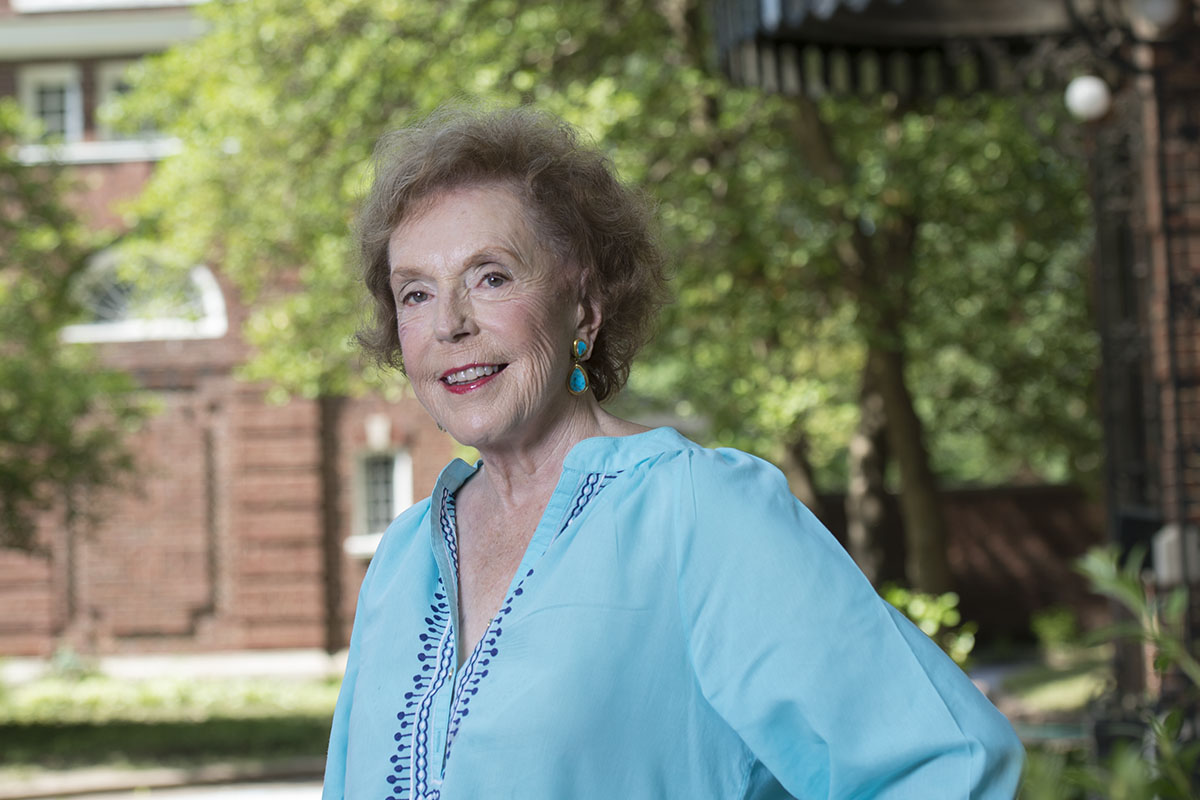For Elizabeth Gentry Sayad, AB ’55, MA ’03, the history of St. Louis and the region is very much alive, it is personal — and it is French.
Like the founders of St. Louis in 1764 — Pierre Laclede and Auguste Chouteau — the Gentrys are French, if distantly. (Their Norman French surname centuries ago was “Gentil,” eventually Anglicized to “Gentry.”) Sayad’s roots in the area run deep. The first of her ancestors to arrive came in 1796 from Virginia. Then in 1815, her great-great-great-great uncle, Justus Post, arrived from Vermont and founded Chesterfield.
St. Louis was only one of a number of communities that dot the eastern and western shores of the Mississippi River that were founded by French missionaries, trappers, businessmen and adventurers. A settlement older than St. Louis, Sayad notes, is Cahokia, Illinois, founded by French missionaries from Quebec in 1699 — the same year as the founding of Williamsburg, Virginia, which is far better known.
Wanting to educate others about the St. Louis region’s French colonial heritage, Sayad founded the nonprofit group Les Amis (The Friends) in 1994.
Les Amis materialized from the great flood of 1993, which damaged some early French structures, particularly in Ste. Geneviève, Missouri. The French consul general in Chicago formed the French Heritage Relief Committee to “show a little solidarity” with the region and asked Sayad to co-chair the committee for Missouri.
He enlisted assistance from Princesse Marie-Sol de La Tour d’Auvergne, then president of the French Heritage Society (with 13 U.S. chapters and one in Paris). Together with Sayad, they held three fundraising galas: in Paris, Washington, D.C., and St. Louis. With the funds, “We bought the most threatened property, the Bauvais-Amoureux House in Ste. Geneviève,” Sayad says. The 1792 house was built in the poteaux-en-terre style with vertical logs inserted directly into the ground.
“Ste. Geneviève has more poteaux-en-terre houses than anywhere else in the United States,” she says. “If you want to see what old St. Louis looked like, visit Ste. Geneviève.”
Sayad was then tasked with giving the property to the Missouri Department of Natural Resources, but the department refused unless another agency provided ongoing support for its maintenance. So she formed Les Amis with “the first focus on the Amoureux House.”
Les Amis then broadened its focus to the entire French Creole Corridor of the mid-Mississippi River Valley, stretching from St. Louis and Cahokia on the north to Ste. Geneviève and Kaskaskia, Illinois, on the south. The river itself was a uniting, not a dividing, influence for the French settlers who came and, together with Indians and Africans, formed the French Creole culture of the river valley.
To introduce visitors to the region’s French roots, Les Amis developed self-guided tours of the Creole Corridor. The organization, which has 200 members, stimulated the filing of an application for the Creole Corridor to become a UNESCO World Heritage Site. The application is in the “for further consideration” category, and Sayad is pleased with having gotten to this phase.
Sayad credits her father with her love of history and Washington University with giving her a “start in French” with Madame Schreiber. In 2012, Sayad was knighted a Chevalier de L’Ordre des Palmes Académiques by the French government for her many contributions to French culture and education.
When asked what she most wants people to know about St. Louis’ heritage, she says, “We have a unique culture that distinguishes St. Louis from any other Upland South or other Midwestern city. We’re not like Indianapolis or Minneapolis or Omaha. We have a very distinct (French) personality.”
